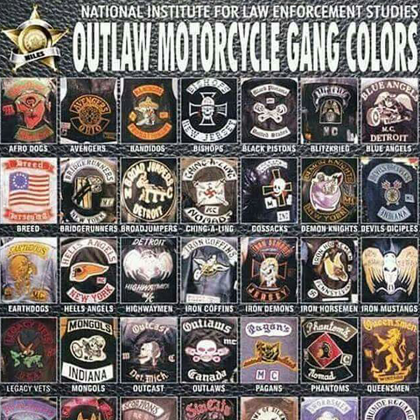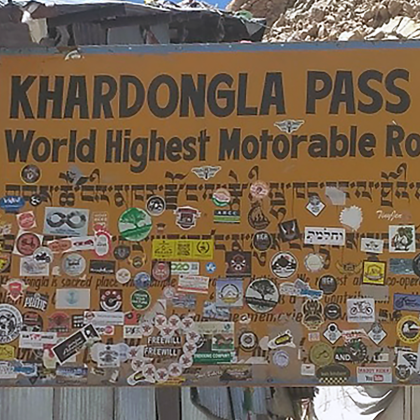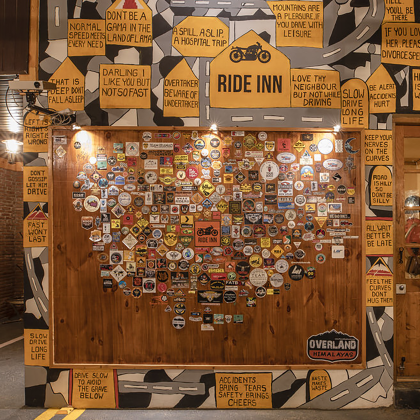Whether you’re an overlander exploring the diverse landscapes of Southeast Asia, navigating the majestic Himalayan routes, or passing through popular travel corridors across the world, you’ve likely come across a fascinating visual phenomenon at key pitstops – cafés, roadside stalls, motels, and repair shops adorned with a colorful collage of stickers left behind by motorcycle adventurers and other long-distance travelers. Cafés, motels, roadside eateries, repair shops, street food stalls, and even street signs are often adorned with colorful stickers, creating an ever-evolving mosaic of motorcycle culture.
These stickers aren’t just random decorations; they represent a diverse tapestry of journeys, memories, and camaraderie. Motorcycle clubs, riding groups, adventurous couples, and solo riders all contribute to this vibrant tradition, each sticker telling a unique story of distance covered and roads conquered. What makes this custom particularly intriguing is its expressive nature. Stickers serve as markers of presence and identity, connecting motorcyclists who may never physically meet yet share a common spirit of adventure.
This culture of leaving a sticker behind long predates today’s social media platforms. In many ways, it was the original form of gathering “likes” and “views” – except instead of chasing engagement through algorithms, riders earned recognition by showing up in person, conquering tough routes, and leaving a physical mark behind. It was, and still is, an analog form of social validation – one that rewards real-world adventure over virtual trends. Compared to the mindless replication of viral trends or chasing clout through online challenges, motorcycle travel offers a far more grounded and meaningful way to connect, explore, and express – one throttle at a time.

Tracing the Origin of Motorcycle Sticker Culture
Disclaimer: The following observations are based on personal experience and informal research rather than verified historical facts. This is a rider's perspective on how the motorcycle sticker culture may have evolved.
The roots of modern motorcycle sticker culture can arguably be traced to the tradition of motorcycle club patches – especially those worn by outlaw motorcycle clubs in the West. These patches, also known as “colors,” served as a visual language to express affiliation, identity, and lifestyle within the biker community. Worn on leather vests or jackets, these insignias conveyed club membership, rank, and sometimes territorial claims. Over time, they became powerful symbols of camaraderie, rebellion, and personal expression.
MC patches, often referred to as “colors,” are more than decorative emblems – they represent a rider’s loyalty, identity, and place within the club. Typically displaying the club’s name and logo, these patches can also indicate rank (such as President or Sergeant-at-Arms) and affiliations with larger alliances. Rich in symbolism, they often draw on personal, historical, or cultural references unique to the biker lifestyle. The structure of these patches – ranging from one-piece designs for social clubs to three-piece sets for outlaw clubs – can signal the nature of the group. Underpinning all this is a strict, unwritten code of etiquette: respecting patches and avoiding imitation is vital in maintaining peace and honoring biker tradition.
As time passed, especially in parts of Asia, a new wave of motorcycle clubs began to form – often inspired by the freedom of the open-road lifestyle popularized by Hollywood films. While these emerging clubs imitated some visual elements of Western MC culture, such as group riding, club names, and insignias, they largely rejected the violent or criminal undertones historically associated with outlaw biker gangs. Many of these clubs were founded by foreign expatriates living in the region and soon grew to include local riders, leading to a blend of Western-style camaraderie with uniquely local values. This further contributed to the normalization and widespread acceptance of motorcycle-related symbolism as a positive expression of identity, pride, and adventure.
Custom printing technology became widely accessible, a parallel culture began to emerge. Independent riders, casual tourers, and non-affiliated motorcyclists started creating and exchanging stickers instead of patches. Unlike the heavy symbolism and territorial weight carried by patches, these stickers were lighter – literally and culturally. They became a way to mark one’s journey, declare an identity, or simply say, “I was here”.

Stickers and the Spirit of the Ride
Motorcycle sticker culture has become a global ritual-an informal yet expressive tradition rooted in freedom, adventure, and belonging. What began as a symbolic form of storytelling has evolved into a grassroots visual language. Riders now proudly place stickers at cafés, gas stations, rest stops, and roadside stalls, transforming these spaces into ever-changing galleries of motorcycle journeys. Public signage sometimes bears the marks too, though not always with local approval.
These stickers aren’t just souvenirs-they’re emblems of identity and experience. Whether swapped among fellow riders or picked up at local shops, they serve as visual diaries: badges of honor that commemorate roads ridden, countries visited, and friendships forged. It’s a way for riders to say, “I was here,” without needing words. For solo travelers, a sticker left behind can quietly signal kinship with others who pass through the same place.
The culture has also been embraced by local businesses in popular riding destinations, many of which now offer custom, location-specific stickers as travel trophies. In some regions, riders can even get novelty versions of their own license plates – localised recreations that mirror their actual plate numbers, but styled in the host country’s format and language. These plates commemorate cross-border rides and serve as a proud reminder of having ridden into foreign terrain.Whether affixed to panniers or kept as keepsakes, they mark not just distance travelled, they tell a story of adventure that spans beyond borders.

Stories and Connections
Some stops have become famous precisely because of these sticker walls. Establishments proudly preserve and display layers upon layers of stickers, turning them into attractions in their own right. Riders often make detours just to see them, contributing their own piece to the collage. These spaces become points of connection – places where stories are shared, photos are taken, and friendships begin.
A sticker spotted far from its origin can spark a conversation or create instant camaraderie between strangers. It reminds riders they’re part of a larger journey – a global web of people who live for the ride.

Sticker Etiquette and Controversies
Despite its charm, sticker culture isn’t without controversy. Indiscriminate placement – especially on public infrastructure, street signs, or protected areas – can lead to visual pollution or even safety concerns. In some places, riders have been criticized for covering up important signage or damaging public property.
These actions, though often done without malicious intent, can harm the reputation of motorcyclists and lead to stricter regulations. It’s a reminder that while the intent is personal expression, the impact is public.

Striking a Balance: Respectful Riding Culture
With awareness, the tradition can continue without causing harm. Riders are encouraged to place stickers only where welcomed or designated – often cafes and biker-friendly stops will have a “sticker wall” or panel just for this purpose.
Best practices include:
- Asking for permission before pasting a sticker
- Avoiding protected natural spaces or road signs
- Respecting local customs and spaces
Maintaining the culture means balancing expression with responsibility.

Leaving Your Mark, Respectfully
The global motorcycle sticker phenomenon is a unique tradition – a fusion of storytelling, identity, and community. It reflects not just where bikers have been, but who they are and what they stand for.
As more riders take to the road, the mosaic will only grow richer. The key is to keep it meaningful and respectful – leaving your mark without leaving a mess. Because in the end, every sticker is more than just a label – it’s a legacy.
